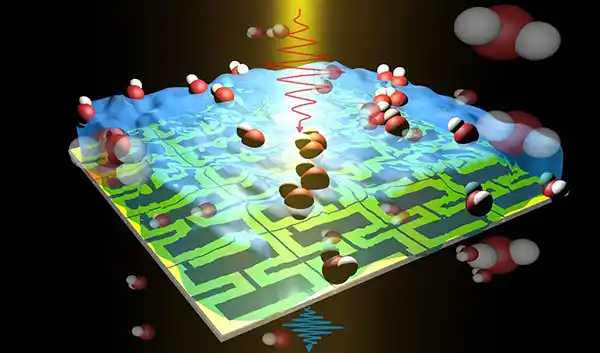افشین رشید
اُستادیار ؛ عضو هیات علمی دانشگاه آزاد اسلامی واحد علوم و تحقیقات تهران
597 یادداشت منتشر شدهThe Structure of Biomedicine Nanosensors and Biomedicine Nano Sensors

Note : These sensors were named nano biosensors in terms of their nanometer size and their application in biological environments. Bio -nanosensors are very small electrodes with nanometer size and cell dimensions, which have become sensitive to the detection of desired chemical or biological species in cells through the stabilization of certain enzymes on their surface . These sensors are used to detect and quantify species in biological systems. This technique is a very useful method in detecting the passage of some molecules through the cell wall or membrane.
In the aerospace industry, there is a need for self-guided nanochips and nanosensors to be placed in the aircraft body as a fixed warning system and to determine when the aircraft needs repairs. In the automotive industry, nanochips and nanosensors can be used for optimal fuel consumption. Also, in expensive cars , these nanosensors can be used to improve the state of the seat and the state of existing controls in accordance with different body states. In the next step, it can be used in information technology to encourage the spread of always-on mobile computer computing systems.
Biological sensor or biosensor, and Test of care mode
Biosensor or biosensor is the name of a group of sensors. These sensors are designed to react with only one specific substance . The result of this reaction is in the form of messages that a microprocessor can analyze. These sensors are used to detect and quantify species in biological systems.
These sensors consist of three parts:
A) Biological acceptor or bioreceptor: It is a biological element (antibodies, nucleic acids, enzymes, cells, tissues and other biological substances) that can selectively react only with a specific substance.
b) Detector and converter: which comes into action after the reaction of certain substances with biological receptors and can determine the type and amount of reaction with different physical-chemical methods (for example, by examining electrochemical, optical, mass or thermal changes before and after reaction (and send to the processor by appropriate signals).
C) signal processors: which are mainly responsible for displaying the results and performing sensor calculations.
Biosensors have been the focus of many research centers in recent years. Since biosensors are powerful tools for identifying biological molecules, today they are used in various medical sciences, chemical industries, food industries, environmental monitoring, production
They use pharmaceutical, health, etc. products.

The human sense of smell and taste, which detects different smells and tastes, or the body's immune system, which detects millions of different types of molecules, are examples of natural biosensors. Biosensors are most widely used in medical diagnostics and military sciences. The most common use of these multi-purpose sensors in military sciences and medical sciences, including the rapid diagnosis of diseases using rapid tests or Test of care, the characteristic of these tests is the speed and cheapness of the testing method. With the introduction of nanoelectronics and microelectronics science and technology and the possibility of making electrodes on a very small scale, it became possible to make nanometer sensors.

Conclusion:
These sensors were named nano-biosensors in terms of their nanometer size and their use in biological environments. Bio -nanosensors are very small electrodes with nanometer size and cell dimensions, which have become sensitive to the detection of desired chemical or biological species in cells through the stabilization of certain enzymes on their surface . These sensors are used to detect and quantify species in biological systems. This technique is a very useful method in detecting the passage of some molecules through the cell wall or membrane.